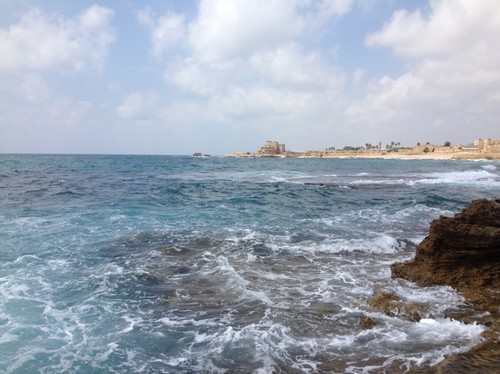
Our final day began at the Cliffs of Arbel. Arbel is most famously known as the place where Herod the Great flushed out dissidents who were hiding in caves along the cliff faces by lowering soldiers in baskets from the top. Our instructor brought us up there, though, to help us process everything we’ve been learning over the last several days.
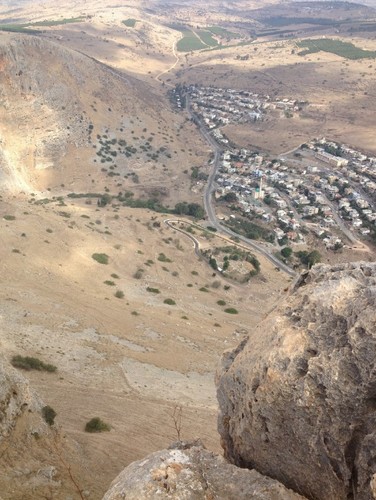
As our instructor told us time and time again, the Sea of Galilee functioned as a ‘microcosm of the nations.’ Because the lake is situated in a high-traffic area (several routes to Damascus pass through the region), people of various nationalities, religions, and political affiliations were forced to interact with each other. Jesus spoke of preaching the Good News to all nations, and from this vantage point they would have been able to see all three political districts that surround the lake. It’s not a stretch to assume that, at one point, Jesus probably took his disciples up there to teach them the same kinds of things we’ve been learning.
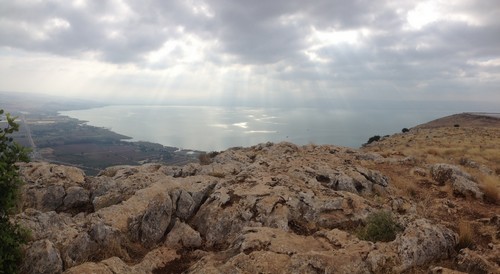
Because Galilee was known to be a bustling, metropolitan area, our instructor encouraged us to reconsider our assumptions about what it means that Jesus would occasionally ‘retreat to Galilee.’ More often than not, Jesus is depicted as one who would sneak away to be by himself. While it’s certainly safe to assume that Jesus did this from time to time, references to Galilee should not be interpreted as ‘solitudinal.’ It’s likely that just the opposite was happening – Jesus was leaving Jerusalem to mingle amongst the nations!
When our lecture was over, we hiked down the side of one of the cliffs. Some parts of the descent were fairly precarious, but we all made it down safely. The hike helped solidify just how dangerous it must have been for Herod’s soldiers doing battle here; we were shaking in our boots, even with handrails and a clear path before us.

Our last stop was Caesarea, perched upon the coast of the Mediterranean Sea. Here, we caught one last glimpse into the world of Herod the Great. Herod built his own mini Roman kingdom at Caesarea, complete with a man-made port to force affluence and trade in his direction. After visiting Herodium, Masada, and Caesarea, it’s clear that Herod was obsessed with ‘defying God,’ as our instructor would put it.
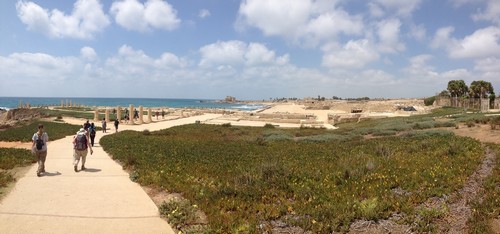
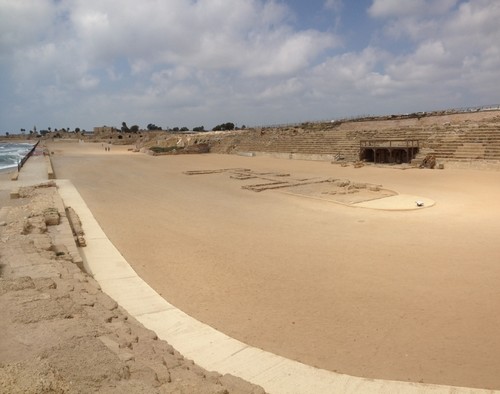
Our instructor explained that in Acts 1, when Jesus spoke of the “ends of the earth,” most Jews would be thinking of the Mediterranean. It was intriguing to consider how they would have heard those words – they knew that Greece and Rome lie beyond the sea, but for so long Jews understood the Medirranean Sea as the furthest extent of creation. Along those same lines, I think it’s important for Christians today to consider what the ‘ends of the earth’ might be for us. Could the Gospel extend beyond the boundaries within which we think it exists? Certainly something to consider.
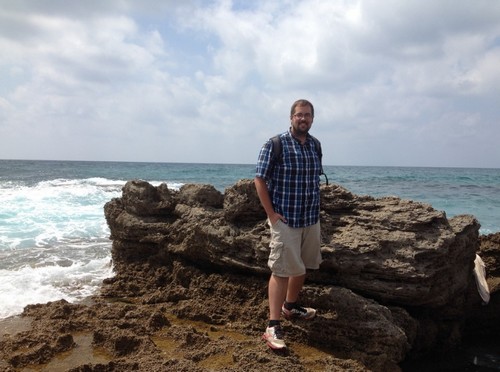
Aside from our test the next day, our visit to Caesarea marked the end of our studies. I am truly grateful for the opportunity to learn by ‘feeling the Bible in my legs, lungs, and heart’ over the last three weeks. Thank you to everyone who has read these entries and prayed for me!
Check back soon…I intend to write one more entry for the time we spent in Jordan 🙂
